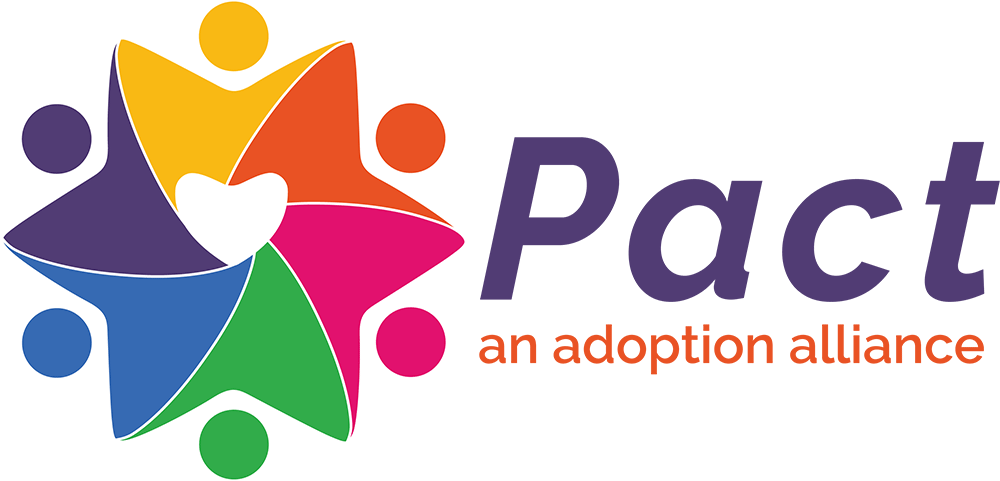
How do you describe yourself?
Mixed race/Black.
How do you describe your family?
We are an intra- and inter-adoptive family of color. Our girls and their mom are Black, and their dad is Chinese.
How or why did you choose adoption to build your family?
My husband and I are both social workers. I told him I always wanted to adopt one child. We thought we would have one biologically first and then adopt. After a year of trying, we got a bit impatient. We didn’t want to pursue IVF. We pivoted and began exploring adoption, thinking our plan might just be reversed–adopt first and have one later. We were pretty naïve. Little did we know that when our older daughter was 22 months old, we would receive a call from the county adoption worker informing us that she had a baby sister who was three months old and needed a foster/adoption home. Our younger daughter had been in an emergency foster home with an older couple that were only interested in temporary care. Suddenly, like within a few days, we were parents of two little girls under the age of two.
What is the most amazing part of being a parent through adoption?
Our adoption story is amazing because our daughters are full biological siblings. Our older daughter came to us via the foster/adoption program when she was six months old, and her baby sister joined us when she was only three months old. They have a connection to each other by blood. We don’t share that same bond, but we consider it a privilege and a blessing that they have that connection as siblings. It has been a gift to raise them together. While we skipped the newborn sleepless night stages for both, we welcomed them early and saw them grow into two very different, resilient, caring, and willful young people.
What is the biggest challenge of being a parent through adoption?
One of the biggest challenges is showing grace to ourselves as parents because adoptive parenting differs from parenting a biological child. That was hard to explain to some of my elders, who used to encourage more punitive ways of “correcting” behaviors. We can’t follow the suggestions of many popular parenting books either. We have to stay focused on building connections, not pushing our kids away, to not isolate them. We can’t communicate that our kids have failed and need to have distance from us to course correct. I constantly remind our girls that we are here no matter what. We love them unconditionally. They are teens now. It’s never dull.
What advice do you have for Black families just starting the adoption process?
Adoption is very complicated. Finding a Foster Family Agency (FFA) or adoption agency that is a good fit is key. I didn’t feel comfortable with the first FFA we consulted. We dropped them and found one more in line with our values. We knew we wanted to adopt a child from the foster care system. As social workers, we felt like that was the right path for us. We discovered Pact as a post-adoption resource via a conversation I had with a colleague who had adopted through the support of Pact. Pact understands how important ethical adoptions are. For Black families, we have to wrestle with understanding our privilege in contrast to BIPOC people whose life circumstances may have pushed them to place their child for adoption or who may have had their child removed from their care. Pact can help Black families process these feelings of ambivalence. I think that is an important initial step for us to center our discomfort within our positionalities and to do that work before welcoming a child through adoption.
How did you connect with Pact?
Malaika Parker, the founder of Pact’s Adoptive Parents of Color Collaborative, reached out to a group of adoptive parents of color in the Bay Area who were raising 0–5-year-old children. She created a play group. We would meet with other families at parks, the zoo, or someone’s home. It was fun for our children to be among adoptees, and the grownups enjoyed support from other adoptive parents of color who were navigating similar journeys.
Why is Pact’s Adoptive Parents of Color Collaborative (APCC) important to you?
I value the APCC track at Pact Family Camps because I love being in community with other adoptive parents of color who are navigating race and adoption in similar ways. We can speak without filters and be honest about what scares us and what inspires us. I learn from other APCC folks. At times, I feel affirmed by them. I also can feel challenged by them. APCC is such a rich and important collective. I wish I made more time for the monthly check-ins, but knowing it is there brings comfort to me. And seeing folks at events or camps restores my spirit and faith in this parenting journey.
What kind of work do you do with Pact?
I am currently the chair of Pact’s Board of Directors. I previously served as an adoption consultant for prospective adoptive parents. This summer, I also will serve as a clinical support staff member at Pact Family Camps West and East. I hope to ease some of the pressure Beth [Beth Hall, Pact’s Executive Director] and Deanna [Deanna Matthews, Pact Family Camp Director] carry when addressing the mental health needs of the families attending. I will provide some crisis intervention and connect folks to resources. I also look forward to supporting Pact staff and mentors in those spaces as needed.
Would you like to be profiled in the future and introduce yourself and your experiences to the APCC community? Please let us know at apcc@pactadopt.org.
